What Is a Feline Obligate Carnivore Diet?
The feline obligate carnivore diet isn’t a trend – it’s what cats evolved to eat. Unlike omnivores (like humans and dogs), cats lack the digestive enzymes and metabolic pathways to efficiently process plant matter. Their nutritional needs are best met through meat, organs, fat, and bones — just like their wild ancestors. This explains why even ‘grain-free’ kibble often fails to meet their true biological needs.
Key facts about obligate carnivores:
- High protein requirement – Cats need about *2-3 times more protein* than dogs.
- Essential amino acids – They require taurine, arginine, and arachidonic acid, which are only found in animal tissues.
- Limited carbohydrate digestion – Cats have no dietary need for carbs and derive energy primarily from protein and fat.
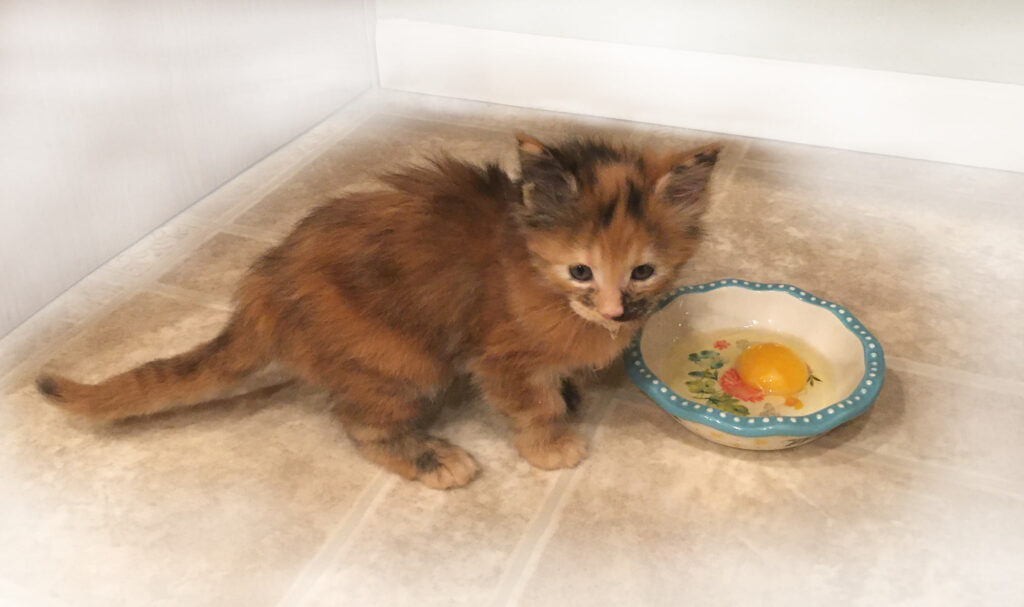
Essential vs Non-Essential Amino Acids: Definitions
Essential amino acids are those that an animals cannot produce on their own and must obtain through their diet.
Non-essential amino acids are those that animals can synthesize from other nutrients.
Essential Amino Acids: Why Meat Is Non-Negotiable
Cats require 11 essential amino acids that they cannot produce on their own and must obtain from animal-based proteins:
- Arginine – Critical for removing toxic ammonia from the bloodstream. Deficiency can cause hyperammonemia or too much ammonia in the blood, a life-threatening condition.
- Histidine – Supports metabolic processes and tissue repair.
- Isoleucine, Leucine, Valine – Branched-chain amino acids vital for protein synthesis, muscle maintenance, and energy.
- Lysine – Boosts immune function and helps prevent respiratory issues.
- Methionine – Supports metabolism and prevents fatty liver disease.
- Phenylalanine – Essential for producing pigments in skin, coat, and eyes.
- Threonine – A building block for proteins and antibodies.
- Tryptophan – Regulates mood and sleep cycles.
- Taurine – The most crucial amino acid for cats — maintains heart health, vision, and reproduction. Unlike dogs, cats cannot synthesize enough taurine and must get it from meat.
Consequences of Essential Amino Acid Deficiency:
- Taurine deficiency – Leads to dilated cardiomyopathy (heart disease), blindness, and reproductive failure.
- Arginine deficiency – Causes hyperammonemia (fatal ammonia buildup) within hours.
- Methionine deficiency – Contributes to fatty liver disease and poor detoxification.
- Lysine deficiency – Weakens immune function and increases infection risk.
- Phenylalanine deficiency – Results in poor coat pigmentation and texture.
Note: Even minor imbalances in other essential amino acids (e.g., histidine, leucine) can impair protein synthesis, slowing growth and healing.
The Bottom Line:
Cats must eat animal tissue to obtain these nutrients. Plant-based proteins lack sufficient levels of taurine and other amino acids in bio-available forms, making meat the only appropriate source. These 11 essential nutrients prove why the feline obligate carnivore diet can’t be replicated with plant proteins.
The Feline Obligate Carnivore Diet: Debunking Plant Myths
A cat’s digestive system is optimized for processing meat, not plants. Here’s why:
- Short digestive tract – Cats process food quickly. Feline GI is ideal for meat but struggles with fibrous plants.
- High stomach acidity – Breaks down raw meat and kills bacteria, but not cellulose.
- No salivary amylase – Cats can’t start digesting carbs in the mouth like humans.
Risks of Plant-Based Diets:
- Digestive upset: vomiting, diarrhea
- Nutritional deficiencies: especially taurine
- Obesity/diabetes: cats process carbs poorly leading to blood sugar spikes
- Kidney stones in male cats: magnesium overload in alkaline urine caused by plant-heavy diets form struvite crystals in cat’s urinary tract
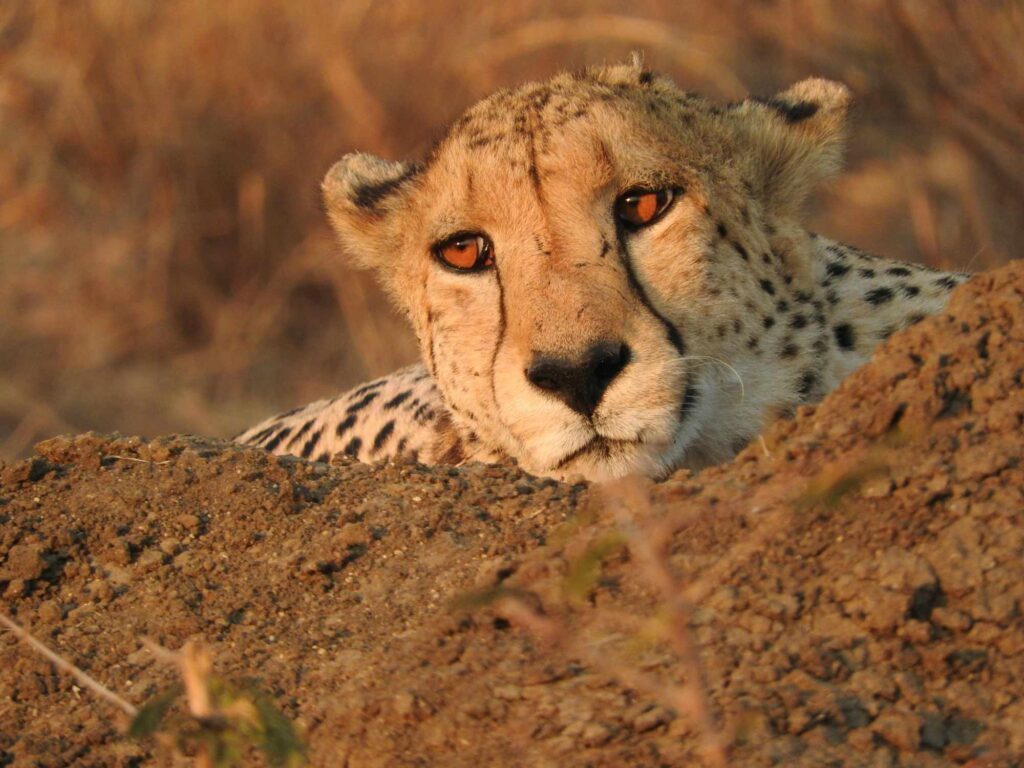
The Problem with Vegetables, Fruits, and Grains
Many cat owners believe that adding vegetables or grains to their cat’s diet is beneficial — but science says otherwise.
You will note that I do not include any vegetables, fruits, or grains in my cats’ diet. There seems to be a strong anthropomorphic drive for the addition of vegetables to a carnivore’s diet – some people just can’t get past the idea that while vegetables may be good for humans, they are not a dietary necessity for a carnivore and will often cause problems in the digestive and urinary tract of the cat if fed in large amounts.
Key Issues with Plant Matter in a Cat’s Diet:
- Lack of digestive enzymes – Cats cannot break down cellulose efficiently.
- No nutritional benefit – Unlike prey animals, cats don’t extract nutrients from plants.
- Potential harm – Raw vegetables can irritate a cat’s digestive system.
Do Cats Eat Plant Matter in the Wild?
Some argue that wild cats consume small amounts of plant matter from their prey’s stomach — but this is misleading.
Cats’ digestive systems lack the specific enzymes required to properly break down plant matter – particularly when raw – into usable forms. While some advocates claim vegetables belong in feline diets because wild cats consume prey stomach contents, this reasoning overlooks a crucial detail: any vegetation in prey animals has already been partially digested by the prey’s own plant-processing enzymes – biological tools that cats simply don’t possess.
Beyond this critical point, it’s worth noting that prey animals like birds and mice contain only minimal plant material. Furthermore, domestic cats frequently avoid consuming the stomach and intestinal contents altogether. This behavior reinforces the feline obligate carnivore diet.
Lisa A. Pierson, DVM explains this in great detail in her article, Making Cat Food.
Observations from Wild Feline Obligate Carnivore Diet:
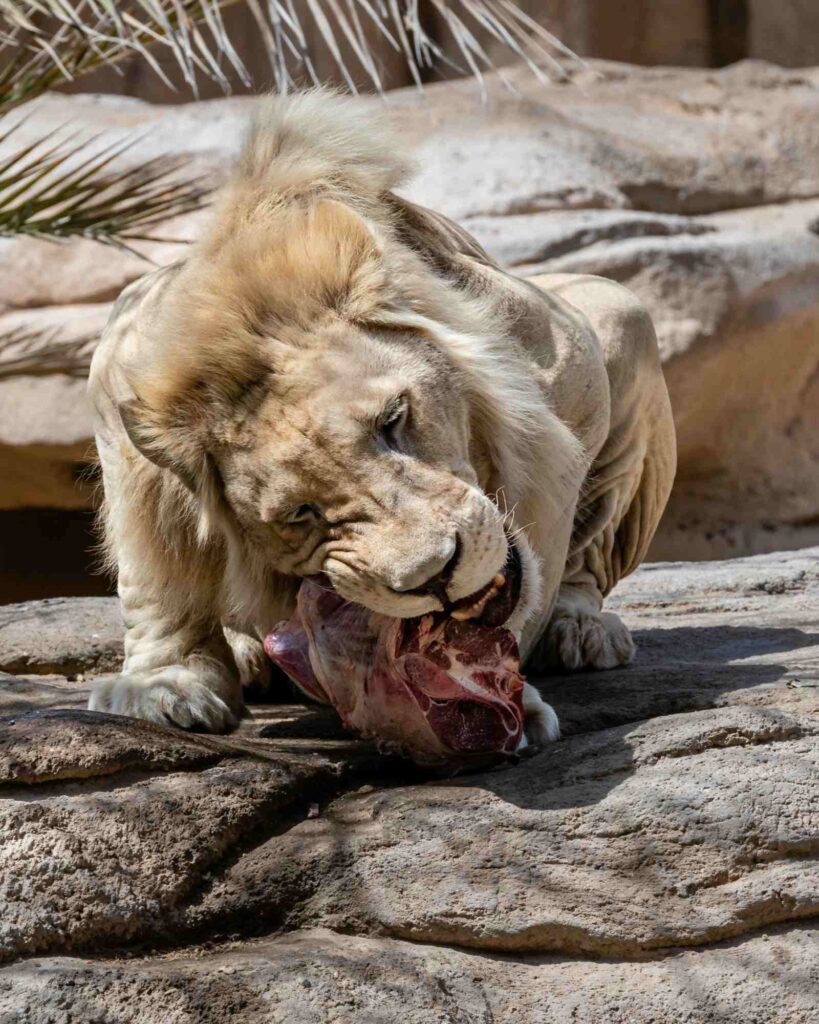
- Cats primarily eat muscle meat, organs, bones, fur or feathers.
- Any plant matter ingested is minimal and already pre-digested by prey.
- Many cats avoid the stomach and intestines entirely.
Can a Small Amount of Vegetables Be Included?
While a strict meat-based diet is biologically ideal for cats, some owners add minimal vegetables for fiber. Let’s clarify why this approach is often misguided.
The Fiber Misconception
Some believe vegetables aid digestion in cats like they do for omnivores (e.g., humans or dogs) or ruminants. This is incorrect for two key reasons:
- Cats Lack Fiber-Adapted Digestion
- Their short digestive tract efficiently processes animal tissue (muscle, organs, bones) but lacks the fermentation chambers herbivores use to break down plant fiber.
- Plant matter passes through largely undigested, offering no nutritional benefit.
- Fur/Feathers ≠ Plant Fiber
- Wild cats consume prey entirely, including skin, fur, or feathers. These materials:
- Stimulate gut motility (helping move food through the intestines).
- Bind hairballs, aiding their natural expulsion.
- Unlike plant fiber, fur/feathers are indigestible keratin—they provide mechanical bulk without the digestive disruptions caused by vegetables.
- Wild cats consume prey entirely, including skin, fur, or feathers. These materials:
Practical Takeaways
If using vegetables: Limit to <5% of the diet (steamed for digestibility), but recognize this is for owner preference, not feline health.
Fiber isn’t necessary: Cats derive no nutritional value from plant fiber, and their system is optimized for processing animal-based bulk (fur/feathers).
Why the Feline Obligate Carnivore Diet Rejects Grains
Current feline nutrition research confirms grains have no place in cat food formulations. As Dr. Pierson emphasizes in her definitive guide “Making Cat Food“: “Regarding grains – please disregard recipes that add grains to an obligate carnivore’s diet. We want to refrain from feeding cats as if they were horses or cows.” This aligns with the biological reality of cats as obligate carnivores.
Final Thoughts: Feeding Cats as Nature Intended
Cats thrive on a high-protein, low-carb, meat-based diet. While well-meaning pet owners may try to add vegetables or grains, these ingredients offer no nutritional benefit and can even cause harm. The feline obligate carnivore diet isn’t a preference – it’s a biological necessity.
Key Takeaways:
✅ Feed primarily meat, organs, and bones
✅ Avoid unnecessary carbs (grains, fruits, starchy veggies)
✅ If using vegetables, keep them minimal and cooked
By understanding the obligate carnivore diet for cats, you can ensure your feline friend stays healthy, energetic, and true to their biological needs.
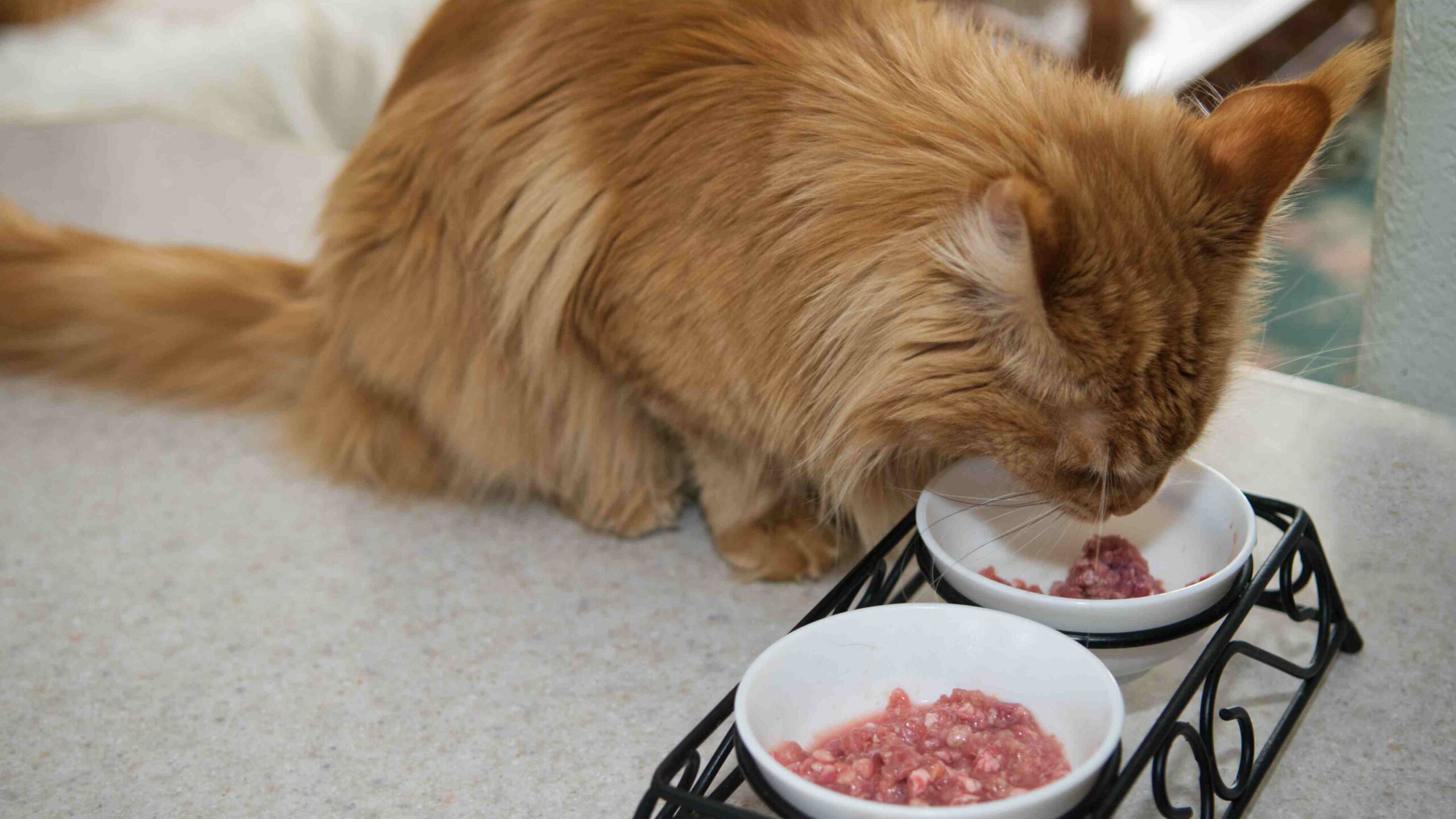

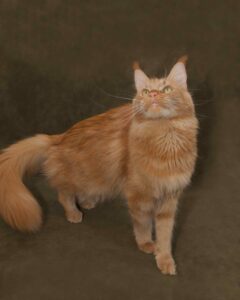

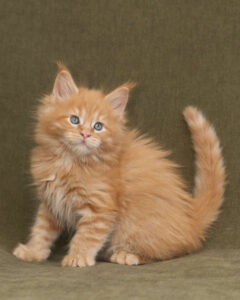
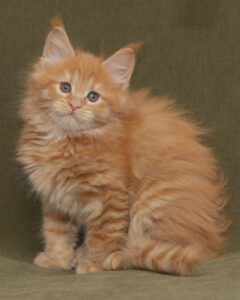
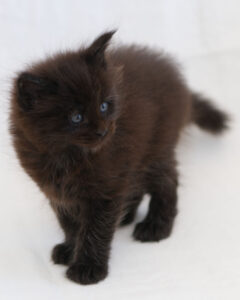
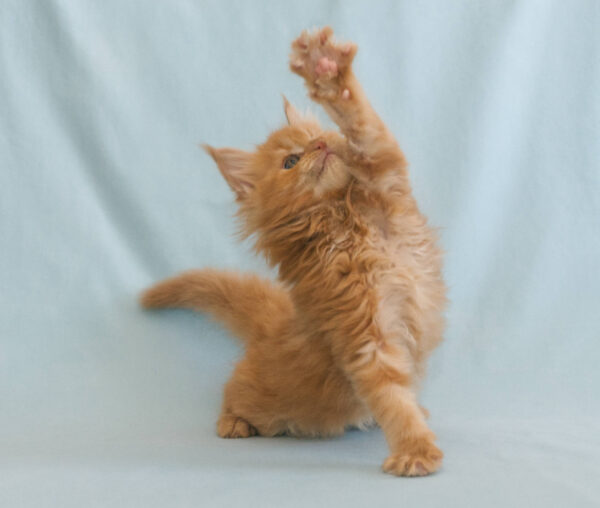
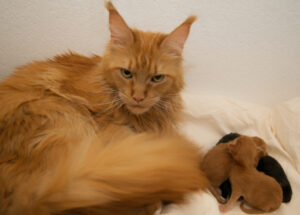
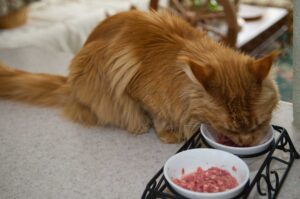
Comments
2 responses to “Feline Obligate Carnivore Diet: Why Cats Thrive on Meat”
Wonderful advice. I was concerned that vegetables should be included in my cat’s diet, but your explanation certainly set me straight. Thank you for your knowledge on this important subject.
You are very welcome!
I will be posting more articles on nutrition and Maine Coon care.